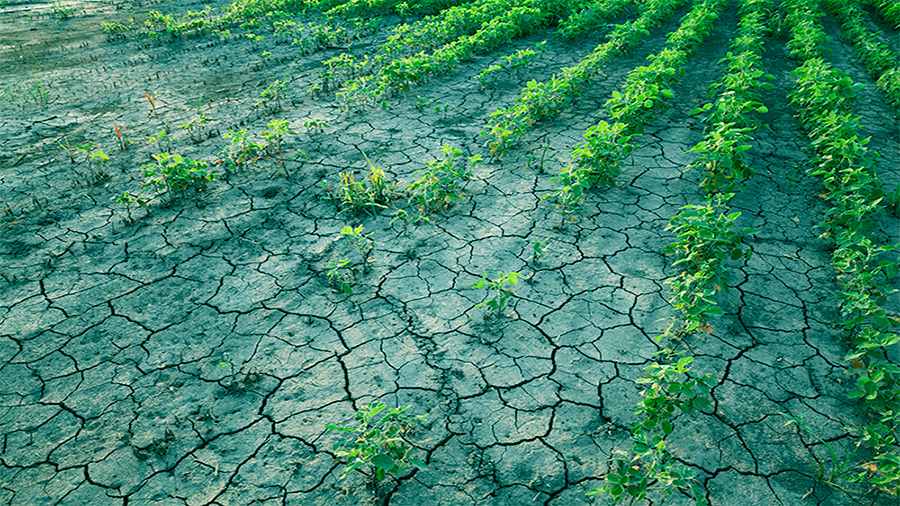Climate plays a pivotal role in agricultural productivity and the financial needs of farmers. Climatic factors like rainfall, temperature, and seasonal patterns directly influence crop yields, livestock health, and overall farming success. These conditions, in turn, impact the demand for agricultural loans as farmers seek financial support to mitigate risks, invest in resilience, or recover from adverse weather events. This article explores the interplay between climate and agriculture, highlighting how climatic conditions shape farming success and influence loan requirements in agrarian communities.
How Climate Shapes Agrarian Success
Agricultural activity is inherently dependent on climate. Factors such as rainfall patterns, temperature ranges, and seasonal variability determine the viability of crops and livestock. Favorable weather conditions lead to robust yields, while adverse events like droughts, floods, or unseasonal temperature fluctuations can devastate agricultural productivity.
For instance, consistent rainfall during the growing season supports crops like rice and wheat, while excessive rain can lead to waterlogging and crop failure. Similarly, extreme temperatures affect pollination and reduce the growth rates of crops, impacting harvest quality and quantity.
Key Climatic Factors Affecting Agriculture
- Rainfall: Determines water availability for irrigation and crop growth.
- Temperature: Influences germination, growth rates, and harvest timing.
- Seasonal patterns: Affect planting and harvesting cycles.
Understanding these factors helps farmers adapt their practices to local climatic conditions and maximize productivity.
The Impact of Climatic Variability on Agricultural Loans
Climatic variability significantly influences farmers’ financial needs, driving demand for agricultural loans. Unpredictable weather patterns increase risks, prompting farmers to seek loans for recovery, operational costs, or investments in adaptive technologies. For example, a prolonged drought may compel farmers to secure loans for irrigation systems, while a flood might necessitate borrowing for replanting or infrastructure repairs.
Additionally, the seasonal nature of farming creates a mismatch between income and expenditure. Farmers often require loans to cover upfront costs like seeds, fertilizers, and labor before harvest revenues are realized. Adverse climatic events exacerbate this financial gap, increasing reliance on credit to sustain operations.
Climatic Factors Driving Loan Demand
- Droughts: Increase borrowing for water management solutions.
- Floods: Necessitate loans for recovery and infrastructure repair.
- Seasonal uncertainties: Drive demand for operational financing.
These factors underscore the critical role of agricultural loans in managing climatic risks and ensuring farm sustainability.

Drought and Its Financial Implications
Drought is one of the most significant climatic challenges for farmers, reducing water availability and compromising crop yields. Prolonged droughts not only impact current harvests but also deplete soil quality, affecting future productivity. These conditions drive demand for loans to fund irrigation systems, drought-resistant seeds, and alternative water sources.
In regions like sub-Saharan Africa or parts of India, where rainfall is inconsistent, farmers often rely on microfinance institutions or government-backed loans to implement water-saving technologies. However, limited access to affordable credit remains a challenge, particularly for small-scale farmers.
Financial Needs During Droughts
- Irrigation infrastructure: Wells, pumps, and drip systems.
- Adaptive inputs: Drought-resistant seeds and soil enhancers.
- Livelihood support: Loans to offset income losses.
Addressing these financial needs is essential for mitigating the long-term impacts of drought on agricultural communities.
Flooding and Its Economic Consequences
Floods are another major climatic threat, often resulting in severe damage to crops, infrastructure, and equipment. In addition to direct losses, flooding can lead to soil erosion, nutrient depletion, and increased pest infestations, further challenging recovery efforts. Farmers affected by floods frequently turn to loans for replanting, equipment repair, and rebuilding infrastructure.
For example, regions prone to monsoons, such as Southeast Asia, experience regular flooding that disrupts farming cycles. Governments and financial institutions in these areas often provide disaster-specific credit schemes to support recovery and resilience-building initiatives.
Loan Requirements After Floods
- Replanting and crop restoration costs.
- Infrastructure repair: Storage facilities, irrigation channels, and fencing.
- Machinery replacement or maintenance.
Flood-resilient financial products play a vital role in supporting farmers during post-disaster recovery periods.
Temperature Extremes and Agricultural Finance
Temperature extremes, including heatwaves and cold spells, can significantly impact agricultural productivity. High temperatures accelerate crop maturation, reducing yields, while cold weather damages frost-sensitive crops and livestock. These events often lead to increased financial pressures on farmers, who require loans to invest in protective measures.
For instance, greenhouses and shade nets are commonly used to shield crops from temperature extremes. Similarly, climate-controlled facilities are essential for maintaining livestock health during adverse conditions. Loans are often necessary to finance these investments, particularly for small-scale and resource-limited farmers.
Mitigating Temperature Risks
- Greenhouses and shade nets for crop protection.
- Climate-controlled facilities for livestock management.
- Insurance premiums to safeguard against temperature-related losses.
Temperature adaptation measures, supported by affordable financing, are crucial for minimizing the economic impact of climatic extremes.

Seasonal Patterns and Loan Cycles
The seasonal nature of agriculture creates cyclical financial needs, as farmers must invest heavily at the beginning of each growing season. These expenses include purchasing seeds, fertilizers, pesticides, and labor. Loans bridge the gap between pre-harvest expenditures and post-harvest revenues, ensuring smooth operations.
Climatic variability often disrupts seasonal patterns, leading to delayed planting or harvesting and increasing dependence on credit. For example, unseasonal rains can ruin ready-to-harvest crops, forcing farmers to seek loans for recovery and debt servicing.
Loan Needs Aligned With Seasonal Patterns
- Pre-harvest: Financing for inputs and labor.
- Mid-season: Loans for unexpected weather-related expenses.
- Post-harvest: Credit for storage, transportation, and market access.
Customized loan products that align with agricultural cycles can enhance financial stability for farmers.
The Role of Financial Institutions in Supporting Farmers
Financial institutions play a critical role in addressing the loan needs of farmers impacted by climatic conditions. Microfinance institutions, cooperatives, and government programs are particularly important in rural areas, where access to traditional banking services may be limited. These entities provide tailored financial products, such as weather-indexed loans and crop insurance-linked credit, to support farmers effectively.
Additionally, innovative financing models, such as community-based lending and digital agriculture platforms, are emerging to bridge gaps in credit availability. For example, digital platforms use satellite data to assess crop health and weather risks, enabling lenders to offer customized credit solutions.
Key Financial Solutions
- Weather-indexed loans linked to climatic conditions.
- Insurance-integrated credit for risk mitigation.
- Digital platforms for streamlined loan applications and approvals.
Collaborative efforts between governments, financial institutions, and technology providers are essential for enhancing agricultural finance systems.
Strategies for Building Climate Resilience
Building climate resilience in agriculture requires a combination of financial, technological, and policy interventions. Farmers must adopt climate-smart practices, such as crop diversification, conservation agriculture, and water management, to reduce vulnerability. Financial support through affordable loans and subsidies can enable these transitions.
Governments and development organizations play a crucial role by providing infrastructure, training, and financial incentives to promote resilience. For instance, programs that subsidize the cost of drip irrigation systems or solar-powered pumps can help farmers adapt to climatic challenges while reducing long-term dependence on credit.
Resilience-Building Strategies
- Climate-smart agriculture practices to mitigate risks.
- Subsidies for adaptive technologies like irrigation systems.
- Access to training and resources for sustainable farming.
These strategies enhance agricultural sustainability while reducing the financial burden on farmers during climatic uncertainties.
The Conclusion
Climatic conditions, such as rainfall, temperature, and seasonal variability, significantly influence agrarian success and the demand for agricultural loans. While favorable climates support robust yields, adverse weather events drive financial needs for recovery, adaptation, and resilience-building. Financial institutions, governments, and technology providers must collaborate to create tailored solutions that address these challenges and empower farmers. By aligning financial systems with climatic realities, the agricultural sector can achieve greater stability and sustainability in the face of a changing climate.

